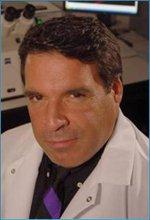Monthly Archives: October, 2013
A Weekly Advocacy Message from Mary Woolley: Risky business
Dear Research Advocate:
What does the current political impasse in Washington have in common with deadly or disabling diseases? They will not cure themselves, and the harm escalates until the “patient” gets expert treatment. There is no place for miracle cures or wishful thinking. The solution isn’t what a given individual or party wants it to be, it’s what solves the problem. Right now, it’s by no means clear what or who will solve the problems — which now include the debt ceiling as well as the lack of funding to run the government. Fasten your seat belts for more turbulence between now and October 17th.
You may have heard that the House passed a bill yesterday to fund NIH, along with several other stand-alone appropriation bills (funding it at an unacceptably low level, I might add — below FY12 levels). Beyond the fact that this piecemeal, slow-walking avoidance tactic of finding a solution to the government shutdown is dead on arrival in the Senate and the White House, this “Sophie’s Choice,” cherry-picking approach to better health has no place in a functioning research and innovation ecosystem, and we spoke out against it. That said, it was gratifying that NIH was singled out as publicly popular and good to see the possibility of new champions emerging who recognize the importance of NIH funding during the floor debate on the bill. But make no mistake, had we and other advocates supported this ill-conceived measure, we would have been supporting the decline of science in this nation. Continue reading →
Sound Public Policy + World Class Science = Healthy Innovation Ecosystem
By Bart Peterson, JD, senior vice president of corporate affairs and communications at Lilly
 I recently had a wonderful opportunity to address the National Health Research Forum, hosted by Research!America. As you may know, this important forum brings together leaders from the public and private sectors to discuss pressing matters that affect the future of research and development in our country.
I recently had a wonderful opportunity to address the National Health Research Forum, hosted by Research!America. As you may know, this important forum brings together leaders from the public and private sectors to discuss pressing matters that affect the future of research and development in our country.
As I mentioned in my speech, from 2000-2007 I had the honor of serving as the mayor of Indianapolis. Although Indianapolis has a solid economic base, I often wondered how other cities in my home state would fare in the headwinds of diverse economic challenges. Indiana is dotted with cities of fewer than 100,000 people all built up around manufacturing – cities that lost their manufacturing facilities to a shifting economy and an increasingly competitive global marketplace. What was going to be the future of these cities? Would they be on the map 50 years from now?
But that said, there were some Indiana cities of the same size that I never worried about at all. I didn’t worry about South Bend or West Lafayette or Bloomington. These are cities of 100,000 people or less, but they are home to the University of Notre Dame, Purdue University, and Indiana University. Continue reading →
Medical Innovation Creates Great Value for Patients, Society and the Economy
By Robert J. Hariri, MD, PhD, Chairman, Founder and Chief Scientific Officer of Celgene Cellular Therapeutics.
 Medical innovation is the source of dramatic improvements in the quality and length of life and also creates enormous value for society and the economy at large. For example, in 1900, the average U.S. life expectancy was 49 years. Today, it is 79. It is estimated by 2040, U.S. life expectancy will reach 85 years. This is primarily the result of innovation in medicine and improvements to public health. New medical treatments accounted for 45 percent of the increase in U.S. life expectancy between 1960 and 1997 and for nearly three-quarters of the increase in U.S life expectancy in the first decade of the 21st century.
Medical innovation is the source of dramatic improvements in the quality and length of life and also creates enormous value for society and the economy at large. For example, in 1900, the average U.S. life expectancy was 49 years. Today, it is 79. It is estimated by 2040, U.S. life expectancy will reach 85 years. This is primarily the result of innovation in medicine and improvements to public health. New medical treatments accounted for 45 percent of the increase in U.S. life expectancy between 1960 and 1997 and for nearly three-quarters of the increase in U.S life expectancy in the first decade of the 21st century.
Living longer, healthier lives translates to economic health as well. Economists’ Kevin Murphy, PhD, and Robert Topel, PhD, calculate that life expectancy gains from 1970 to 2000 have added approximately $3.2 trillion per year to national wealth. They also estimate that a 1% reduction in cancer mortality would be worth $500 billion to the U.S. economy.
Unfortunately, there are a number of misconceptions about new medical treatments that are based on outdated information, or failing to consider medical innovation in perspective. One misconception is that prescription drug spending is growing rapidly. In fact, is it not — spending on prescription drugs actually declined by 3.5 percent per capita in the U.S. last year. And the small portion of health care spending accounted for by prescription drugs actually saves money by reducing the need for other medical services. Continue reading →
Statement by Research!America President and CEO Mary Woolley on Government Shutdown
Recent polling commissioned by Research!America shows nearly half of the American public does not believe we are making enough progress in medical research in the U.S.; the government shutdown proves them right. The shutdown shows where the real deficit is: in the failure of elected officials to take action to fund American priorities. The deficit seems to be a deficit of common sense! It’s inconceivable that our nation’s research ecosystem, the catalyst for addressing current and emerging health threats, is being hamstrung by the inability of our elected officials to reach a budget agreement and end indiscriminate, across-the-board budget cuts. The research pipeline has already been deeply warped under sequestration, heightening the anxiety of Americans concerned about the future of their health. It’s time for lawmakers to put aside ideological differences and take decisive action in short order to sustain funding for medical and health research. Too many lives hang in the balance as partisan politics continue to take precedence over the essential work of legislating.